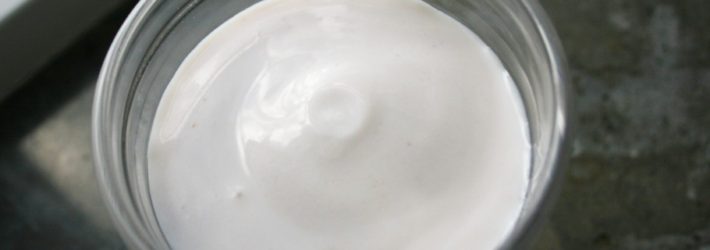Do you experience gas, bloating, painful cramping, and diarrhea after eating dairy? Then you are in good company.
Sixty-five percent (some estimates are even higher) of the world’s population have trouble digesting lactose, the carbohydrate that gives milk its sweet taste. This condition is called lactose intolerance. Lactose is the predominant carbohydrate found in all species that make milk-human milk, cow’s milk, goat’s milk, etc. Lactose is a disaccharide (meaning two carbohydrate units) consisting of glucose and galactose. You can think of lactose as two puzzle pieces locked together. One puzzle piece is glucose while the other puzzle piece is galactose. In order for lactose to be digested properly, the enzyme lactase must be present in the small intestine-where the majority of digestion and absorption of food occurs. Lactase is required in order to break up the puzzle pieces into single units, so they can be absorbed.
Why do so many people have lactose intolerance?
It is mainly because the amount of lactase produced in the small intestine declines with age. It occurs more in groups of people who don’t regularly drink milk as they get older or who drink milk only in the fermented form-for example, people of East Asia, African, Arab, Greek and Jewish descent. Caucasians seem to have the best ability to digest lactose, although I haven’t seen this to be true in my patient population, me included!
What causes these uncomfortable symptoms?
Because there isn’t enough lactase to break up the lactose, the two puzzle pieces remain locked together as they travel throughout the intestinal tract. The lactose will make its way to the colon, which takes anywhere from 30 minutes to a few hours, where the 100 trillion bacteria that live there digest it (YOU should be digesting it, not them). As a result, a lot of gas is produced, leading to bloating and embarrassing flatulence. Since lactose is a large molecule and shouldn’t be in the colon, it creates a high osmotic load. Meaning, there is too high of a concentration of molecules in the colon, compared to what is on the other side of the intestinal wall. The body will increase water production to equalize things out and the person will experience diarrhea as well as abdominal pain. This isn’t a very pleasant experience.
I never thought that I had lactose intolerance because my main symptom was constipation, not diarrhea. I would actually drink milk to give myself diarrhea. It didn’t work. The reason for this is because I have small intestinal bacterial overgrowth. This condition is where there are too many bacteria in the small intestine. The bacteria digest the lactose before it reaches the colon. If it isn’t in the colon, then you don’t have the high osmotic load-which is what is responsible for the diarrhea.
Can I test for this?
There is a test that your doctor can give you to indirectly test for lactose intolerance, but only if you have a bunch of money to throw around. The test is called the hydrogen breath test. The person drinks a lactose containing drink and blows into a balloon-like bag multiple times over a 2 hour period. If the person produces a certain amount of hydrogen gas (only microorganisms produce hydrogen gas-not you), then that is a positive diagnosis. What is happening is that lactose should be completely broken down before it reaches the colon. If it isn’t, the bacteria in the colon break it down and hydrogen is produced. This is absorbed into the bloodstream and expelled through the lungs. This test costs over $175. How many people want to pay that much money?
Because the reaction is pretty quick, most people are able to associate the ingestion of dairy with their symptoms and there is no need to test.
Do you know if you have an issue with lactose? If not, here is what you can do:
Remove all dairy for 2 weeks.
Did your symptoms go away or were they reduced in frequency? OK, after the two weeks, you can do one of two things.
1. If you want to be cautious, then have some low lactose products, like sharp cheddar cheese and keep increasing the lactose dose and monitoring for symptoms (see below for the lactose content in foods).
2. Or, after the two weeks, go for the big guns and drink a glass of milk. Wait 30 minutes to a few hours. Are your symptoms back? Then you might have lactose intolerance.
I know I have an issue with lactose intolerance, now what?
Treatment options
High lactose containing foods
The treatment for lactose intolerance is to either remove dairy from the diet, ferment it or to add enzymes when you eat dairy. This will depend upon your preferences. A word about fermentation. When dairy or cheese is fermented, the bacteria present in the dairy consume the lactose and produce lactic acid. This is why fermented dairy, like cheese and yogurt, are typically tangy.
Foods that contain the highest amount of lactose are:
• Fluid milk (from all species-cow, goat, camel)
• Powdered milk
• Evaporated/condensed milk
• Whipping cream
• Processed cheese
• Ice cream
• Buttermilk
• Cottage cheese
• Yogurt
• Sour cream
You might be wondering-why is yogurt, buttermilk and sour cream on the list of foods with high amounts of lactose since they are fermented? Most yogurt, buttermilk and sour cream that are purchased from the grocery store haven’t been fermented long enough to break up the lactose puzzle pieces. However, they still contain much lower lactose content than fluid milk-some of my clients tolerate yogurt and some of them don’t. Some stores carry lactose free yogurt and sour cream. You can also look into making your own fermented dairy at home, where you have control over the fermentation time.
Low lactose containing foods
Dairy products that are low in lactose are many of the aged cheeses like Camembert, Feta, Parmesan, sharp cheddar, Gouda and other mature cheeses. These cheeses are likely to have been fermented long enough to remove most of the lactose. Many of you lactose intolerance sufferers out there will be happy to know that dark chocolate (75% cacao) is low in lactose and so is butter.
What else has lactose?
Lactose isn’t just in dairy products, it is in many medications and supplements too. Lactose makes a really cheap filler to take up space. I wanted to put a client on Saccharomyces Boulardii (a probiotic derived from yeast) while she was on antibiotics to treat bronchitis. She didn’t want to drive all the way to the south side of town to the health food store. However, the drug store brand of this product, Florastor, has around 33 mg of lactose per capsule and she certainly needed more than one capsule. One cup of milk has about 11 grams of lactose (11,000 mg)-is the lactose in the probiotic capsules going to bother this patient who is lactose intolerant? I don’t know, but she didn’t want to take any chances, so she purchased a product without lactose in it from the health food store. Be sure and read the labels of all food and supplements so that you aren’t ingesting lactose without knowing it.
Enzyme supplements
Let’s say it’s a hot, sunny day and you want to have some ice cream to cool off. Or maybe it’s in the middle of winter and you want some ice cream, I mean, is there ever a time when we don’t want ice cream? In this situation, you would have to take a lactase enzyme pill at the same time that you eat the ice cream. A popular product on the market is called Lactaid® enzymes. This product can be found at many supermarkets and drug stores. So does it work? I have pretty severe lactose intolerance and I can take maybe a couple of Lactaid® pills with a few bites of ice cream, any more than a few bites and I’m going to be in trouble. Some people have more lactase activity than others and each individual has to find their own threshold and what works for them. Some people can tolerate 1 cup of milk per day, but if they have any more than that, they will start having symptoms. Some people can have a few sips of milk and they get symptoms. You will just have to experiment – but please conduct your experimentation when you don’t have some place to go in the next 24 hours. If you do have to go out, make sure there is a bathroom within a comfortable distance-just in case.
Enzyme drops
One thing that I like to do to guarantee that the dairy product is lactose free is to purchase my own liquid lactase enzyme and add it to my dairy products (I haven’t seen this in stores, but you can find it online). For example, I like to have a couple of tablespoons of heavy cream in my morning coffee, but even that little of an amount will send me home from work to change my clothes by noon time. Fashionable pants do not support my ever increasing girth due to the bloating. And really folks, I’m not at that point where elastic waistbands are a major staple in my wardrobe, although I do have a few stretchy skirts for this exact purpose. The particular lactase brand that I have says that you should add 5 drops to a pint of milk. This should be enough to digest 99% of the lactose within 24 hours. Be sure and wait for 24 hours before consuming it. You can also purchase Lactaid® brand milk-all it has in it is milk plus the lactase enzyme, but it is much cheaper to purchase the lactase separately and add it yourself. You will notice that the milk will taste sweeter when the lactose is broken down, since glucose plus galactose are sweeter tasting by themselves. I think this is a good thing!
Stop the bloating, gas, and upset stomach
Do you feel that you have lactose intolerance? Look at your diet and see if the symptoms that you are having are associated with dairy. If so, eliminate dairy for a couple of weeks and see how you feel. Lactose intolerance is very common, can come on suddenly and make you feel pretty miserable. It is the first thing that I look at with my clients who experience these types of symptoms. If you are still having symptoms after removing lactose, then further investigation will be necessary.


